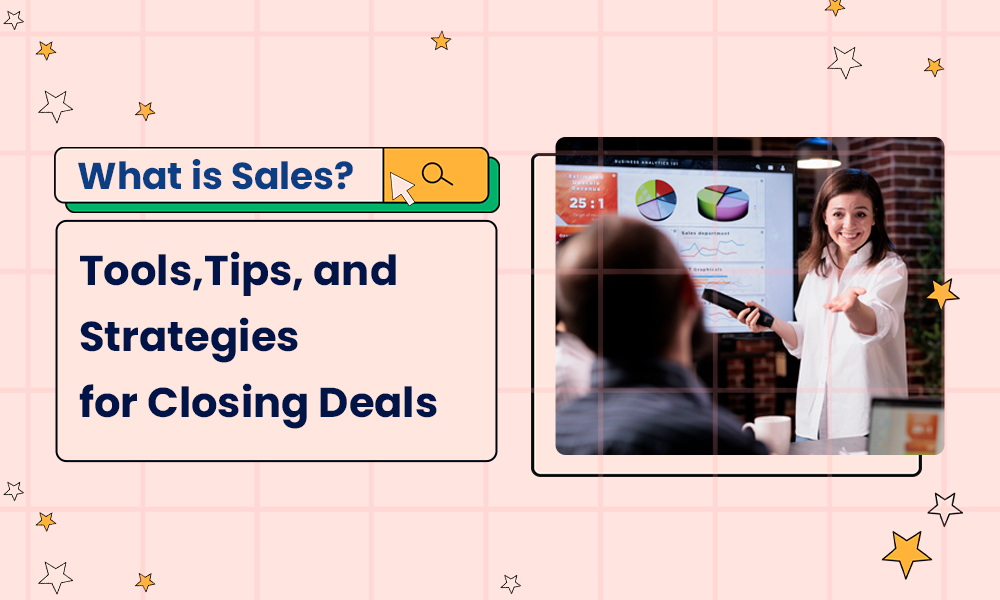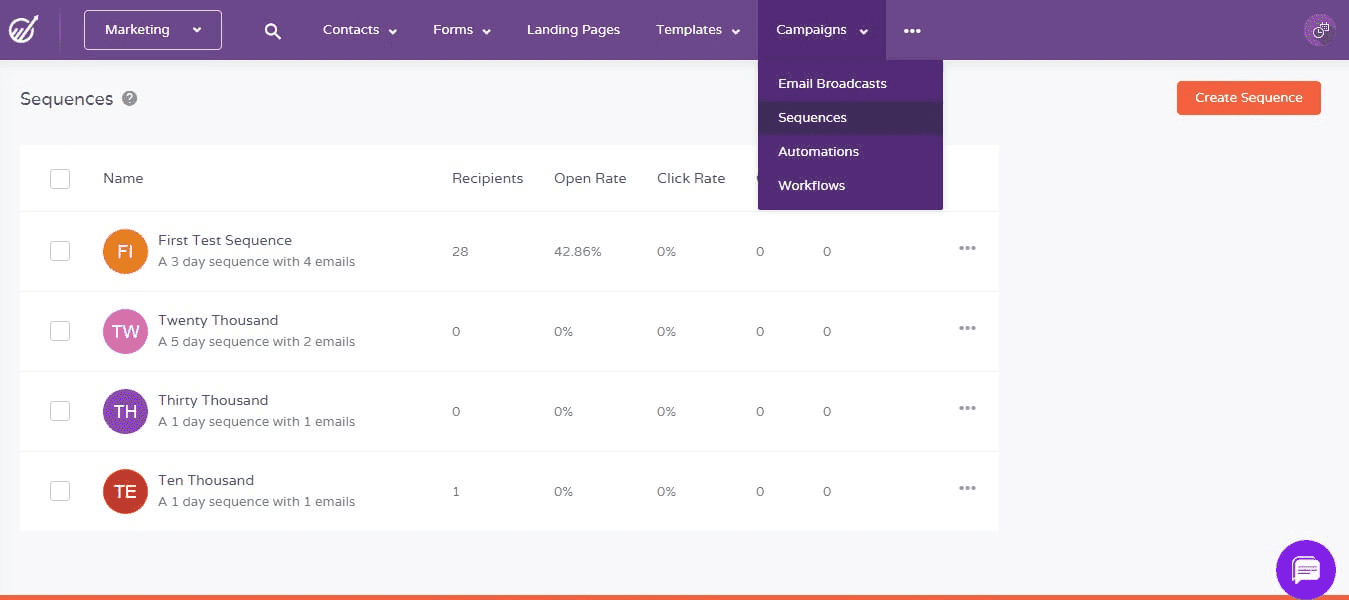Framing your conversation to showcase your product’s value.
Finding the right persons to share this value with.
And figuring out the right time to engage the right persons is … TOUGH.
But here’s the thing: These are some of the exact elements that produce a well-oiled sales engine.
GREAT MESSAGING + RIGHT LEAD + RIGHT TIME + {OTHER ELEMENTS} = SALES.
No doubt, for your business to grow and become a market leader, you need to make sales. Lots of it.
Yet, selling your products or services isn’t always a walk in the park. You have to find the best prospects, create or use effective sales strategies, adopt the right sales tools, and perfect your closing techniques.
Doing these things isn’t easy for some salespeople. Talkless of Small and Mid-size Business Owners (SMBs) who might consider the learning of all these as tasking. But not anymore.
In this guide, we’ll provide all the information that’ll get you up to speed on all-things sales.
We’ll discuss:
- What sales entail
- The difference between sales and marketing
- How to improve your sales
- Sales tools
- Sales prospecting
AND lots more.
Let’s dig in.
Table of Contents
What is Sales?
Sales refer to activities an individual or business undertakes to sell products and services. Typically, businesses have a salesperson or sales team that executes the selling process.
This person or team reaches out to potential buyers, offers them relevant solutions, handles objections, and moves prospects toward making a purchase.
Some common types of sales are:
- Inside sales: Inside sales occur when your team remotely broker deals with prospects rather than in person.
- Outside sales: Here, your salespeople engage prospective clients face-to-face outside the organization.
- B2C sales: It involves sales between an organization and its individual consumers.
- B2B sales: B2B sales occur between an organization and another business. These transactions often involve many decision-makers, a larger deal size, and a longer sales cycle than B2C.
Is Sales Different from Marketing?

Sales and marketing share a common goal—which is to drive revenue. However, there are differences in their activities, size of customer base, and goal timeline.
Marketing involves several processes for attracting your target audience to your brand’s products or services. As marketers primarily focus on driving brand awareness and sending qualified leads to sales, their goals are often long-term and involve campaigns that span several months.
Once a subset of the target audience indicates interest in what the business offers, the sales department moves in to convert them to customers. The aim is to get prospects to buy the company’s product within a short time.
So, sales goals, quotas, or targets are measured within a short duration, often monthly.
As it’s up to the sales team to get the prospect to the finish line, optimizing your sales processes is critical. This allows you to close more deals and boost your revenue.
How to Improve Your Sales
Now, let’s get into some key steps that can get your sales numbers rolling.
1. Perform Sales Analysis

Sales analysis involves evaluating your data to discover trends and elements that impact your sales.
At the end of the analysis, you should have a comprehensive report that provides insights into your strengths and weaknesses, customer behavior, future and emerging trends, and sales performance.
Having this information allows you to make data-driven decisions that’ll generate the best results from your sales efforts.
Here’s a 3-step approach for performing a sales analysis:
Step 1: Determine your key sales metrics.
This includes win rate, leads generated, average deal size, sales pipeline coverage, sales-to-date, product performance, cannibalization rate, sales per rep, and other important metrics on your sales dashboard.
Step 2: Evaluate these metrics on your CRM
Identify patterns, sales opportunities, and challenges from present and past data.
Step 3: Send the report to relevant parties
Create an overview of your findings and send it to relevant stakeholders.

2. Do In-depth Sales Planning
Want to reduce the risks of poor performance? Planning and forecasting your sales can make a world of difference.
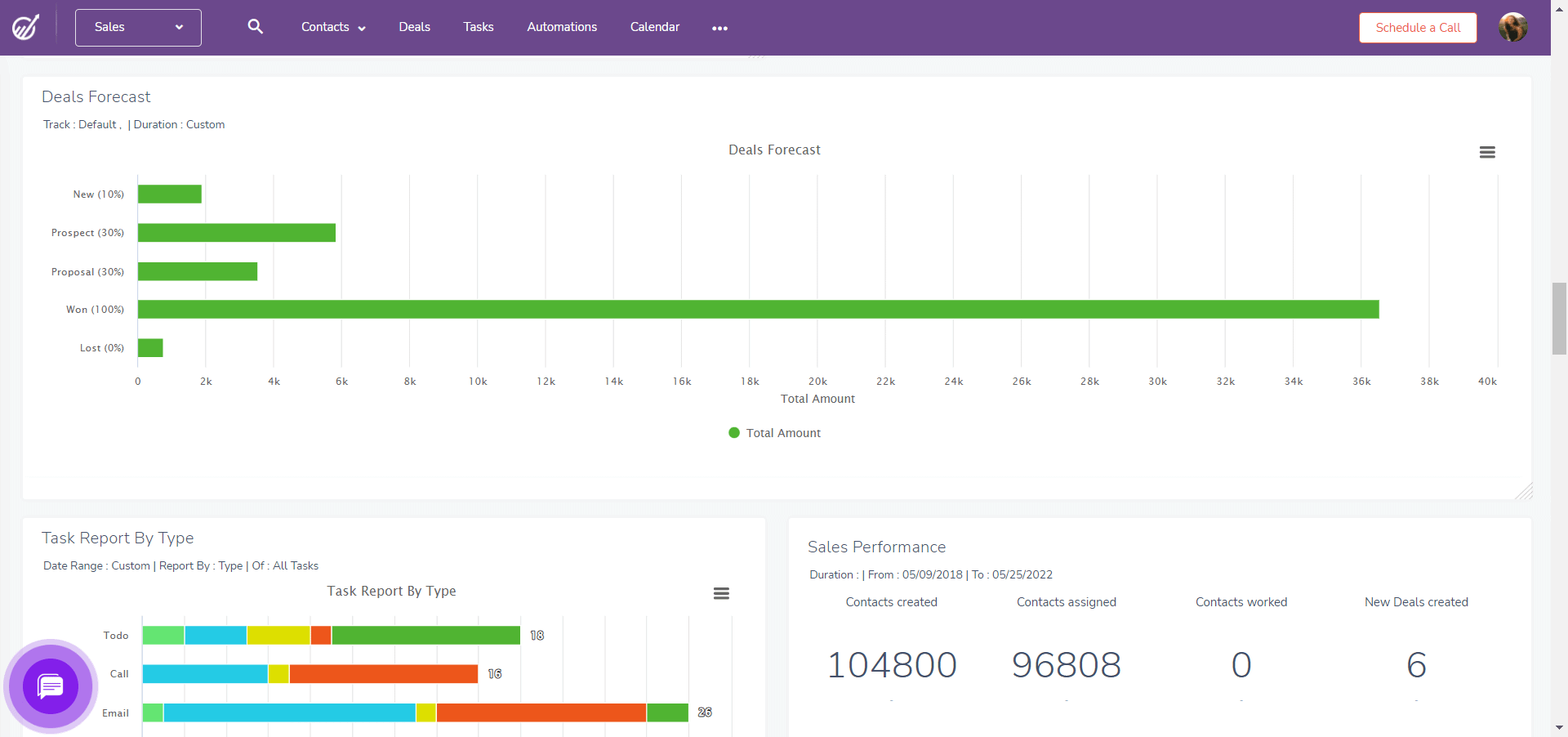
Sales planning is the process of mapping out your goals and the best way to meet them. Think of it as creating a roadmap that visualizes your desired result and the components you’ll use.
These elements include your target audience, your company’s available resources, and the strategy to meet your goals.
Below are best practices for conducting sales planning:
- Have a realistic budget
- Perform in-depth competitive analysis
- Encourage interdepartmental collaboration
- Understand the challenges of your sales team
- Identify industry trends that’ll support your strategies
- Specify the role of each individual or team in your strategy
- Specify the sales planning tools (e.g., EngageBay, HubSpot, and Timetrade) for tracking your progress
Related post: 8 Reasons Why a Sales Planning Tool is Needed for Your Business
3. Create an Effective Sales Strategy
A sales strategy is a component of planning. It’s used to implement specific goals you’ve determined during your planning.
As a result, a sales strategy will outline step-by-step actions for product positioning, competitive analysis, customer acquisition & retention, or any other objective that moves you closer to your goals.
Here’s how to develop and use an effective sales strategy:
- Review your sales data
- Identify your most valuable prospects & customers and create avatars for each group
- Assess your strengths, weaknesses, opportunities, and threats (SWOT)
- Create a strategy
- Set your revenue goals
- Draw up a growth timeline for your sales team
- Deploy the strategy
4. Manage Your Sales Leads Better
Let’s face it—to have customers, you need leads. And to make consistent sales, you need to make the most out of every lead you have.
That’s where sales lead management takes center stage.
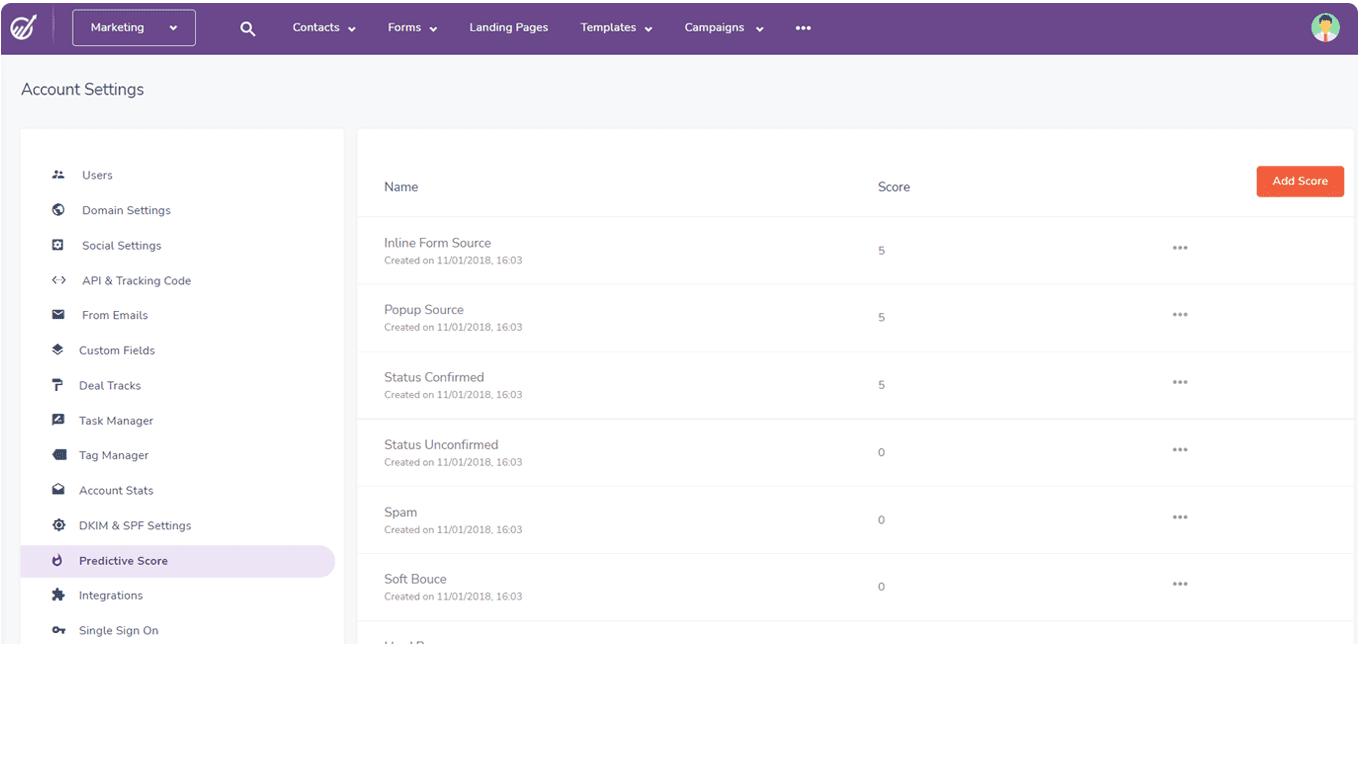
Sales lead management is a process for identifying, qualifying, organizing, and nurturing leads until they convert to paying customers or become obsolete. This allows you to better track (and get value from) high-quality leads in your pipeline, and maintain steady revenue growth.
Here are some ideas for generating and nurturing leads:
- Advertise online
- Invest in social listening
- Set up a referral program
- Implement SEO strategies
- Host networking events & webinars
- Reach customers better through email marketing
Read also: 17 Powerful Techniques to Generate B2B Sales Leads
5. Fine-tune Your Sales Prospecting Technique
Besides managing the leads you have, another way to increase sales is to find new clients. Prospecting deals with identifying and reaching out to potential customers with the goal of converting them into clients. Your prospects should include people who:
- Have the budget for your product or service
- Have the authority to make the purchasing decision
- Have an indicated interest in your products or services
As your prospects are typically individuals who have been qualified as ideal customers, improving your prospecting techniques can help you close deals quickly and grow your revenue.
Some effective prospecting techniques to use include making warm & cold calls, reaching out to existing clients, following up on deals, perfecting your sales pitch, and investing in social selling.
👉Strategic selling might not be what you think it is. Get a fresh perspective from our detailed article.
6. Strengthen Customer Relationships through Sales Engagement
Sales engagement refers to all interactions between a sales rep and your customer throughout the entire buyer’s journey across many channels.
Insights gleaned from these conversations can help you learn the message, timing, and channel that generate the best results. This translates to optimized outreach, better relationships, and higher conversion rates.
The best practices for effectively engaging customers are to:
- Deliver personalized conversations
- Align your marketing and sales efforts to grow revenue
- Invest in sales enablement software. The average CRM supports this.
- Track individual and team-level performance and optimize accordingly
- ABV—Always build value by providing valuable information to customers from the awareness to the purchase stage
Read also: 10 Things to Ensure Your Sales Playbook is Crazy Good
7. Build Connections and Credibility with Social Selling
Did you know that historically, sales reps who are strong social sellers gain 45% more sales opportunities than their peers?
This is because, rather than hard-sell methods, such as sending unsolicited DMs, social selling seeks to deliver value.
Social selling involves the creation of meaningful content that engages your target audience and establishes you as the go-to source for the solutions you can offer your audience.
This allows you to build a ton of credibility that could result in sales and referrals. Lots of brands are going hard on social selling and this includes Dreamdata, Gong, Outreach, and lots more.
Here are some useful social selling techniques you can adopt:
- First, serve value to your audience, then sell
- Prioritize building relationships with your potential buyers
- Create valuable content and stick to a schedule
- Interact with your prospects
- Regularly update your social media activity and profiles with your latest offers, milestones, achievements, etc.
- Track your performance and change what’s not working
👉Empower your sales strategy with the best sales analysis practices – learn more in our expert guide! 💪
8. Empower Your Sales Team With the Right Tools
Sales activities like data analysis take a lot of time, energy, and resources. If you execute it manually, chances are the process might take forever or result in errors that produce flawed data.
To save time and ensure accuracy, sales tools can help.
You can start with free sales tools like EngageBay, Insightly, and HubSpot and then upgrade to a paid version. Here are some sales tools you may need:
- Prospecting tools like CrunchBase, Overloop, Outreach, Clearbit, and EngageBay help you identify and engage with the best-fit potential buyers.
- Lead generation tools like Intercom, EngageBay, Pipedrive, and Marketo help you capture, track, and manage leads.
- Sales forecasting tools help you predict weekly, monthly, and yearly sales revenue. You can use ActiveCampaign, Kaplan, and EngageBay for this.
- Database management tools allow you to store and manage information about your past, present, and potential customers. The average CRM should give you this functionality.
- Pipeline Management tools like Zendesk, SharpSpring, EngageBay, and HubSpot help you monitor prospects as they move through the different stages in their buying journey.
- Sales automation tools (more on sales automation later on).
Related post: 11 Sales Tools To Supercharge Your Sales Stack
9. Invest in Sales Enablement
Let’s imagine you have a goal of making 100 sales every single month. How do you achieve this goal if your team has poor closing skills? Chances are you’ll come up short on your goal.
But by investing in sales enablement, you get your team the resources for collaborating, closing deals quickly, delivering exceptional experiences, and improving customer retention. Besides providing sales tools, other sales enablement components include training, content, and support.
Let’s look at steps to create a sales enablement strategy that positively impacts sales:
Step #1: State the goals of your sales enablement strategy. This includes problems your sales team is facing.
Step #2: Determine a buyer persona.
Step #3: Involve other departments (e.g., marketing) that align with sales.
Step #4: Create relevant internal content that’ll help sales agents in each stage of the funnel.
Step #5: Go all-in on sales enablement technology. For example, automation tools.
Step #6: Provide sales training.
Step #7: Evaluate the process by tracking your sales cycle length, content usage, time spent on active selling, and more.
Related post: 7 Sales Management Tools to Build the Perfect Sales Team
10. Set Up a Winning Sales Cadence
Sales cadence is a series of touchpoints that help you establish a connection with prospects across multiple channels. It’s essentially a follow-up plan.
By setting up cadences, you can better understand the channel where your customers are more receptive and create effective follow-up sequences that fuels conversions.
Follow these 7 steps to build a sales cadence:
- Understand your target audience
- Determine your communication channel (phone, email, social media, etc.)
- Make your first contact/touch
- Establish the ideal number of touches. This is commonly around 8 to 12 touches, with each contact kicking off every few days
- Set the cadence duration (i.e., the total length of your sales cadence from the first touch to the last). Ideally, it should last between 2 to 4 weeks
- Send relevant content
You can use sales cadence tools like EngageBay, SalesLoft, Close, and Keap to set up, create, and monitor your cadences.
Related post: You Understand What Strategic Selling Means? It Is Not What You Think
11. Optimize Your Sales Pipeline
A sales pipeline is a visual way of tracking prospects as they progress through the different stages of your sales process. Having a slow, sparse, or even clogged sales pipeline means you won’t close deals as often and quickly as you should. This translates to low sales.
When inspecting your pipeline, pay attention to loopholes in your essential pipeline stages and your performance metrics. These metrics include sales velocity, win rate, close ratio, sales cycle length, deal size, and the number of qualified leads.
Here are quick tips to help you optimize your sales pipeline and close more deals:
- Use a sales CRM to automate your workflow
- Align your pipeline with the buyer’s journey
- Use a task management system to get notifications about important pending activities
- Prioritize high-value leads
- Follow up on qualified leads multiple times.
Related post: Sales Pipeline vs Sales Funnel – Yes, They’re Two Different Things
12. Automate Your Sales Process
The biggest advantage of sales automation is the time it saves. Your team can automate repetitive administrative tasks, set up workflows, and streamline your sales processes with only a few clicks.
This gives them time to focus on activities like building genuine relationships with customers and closing more deals.
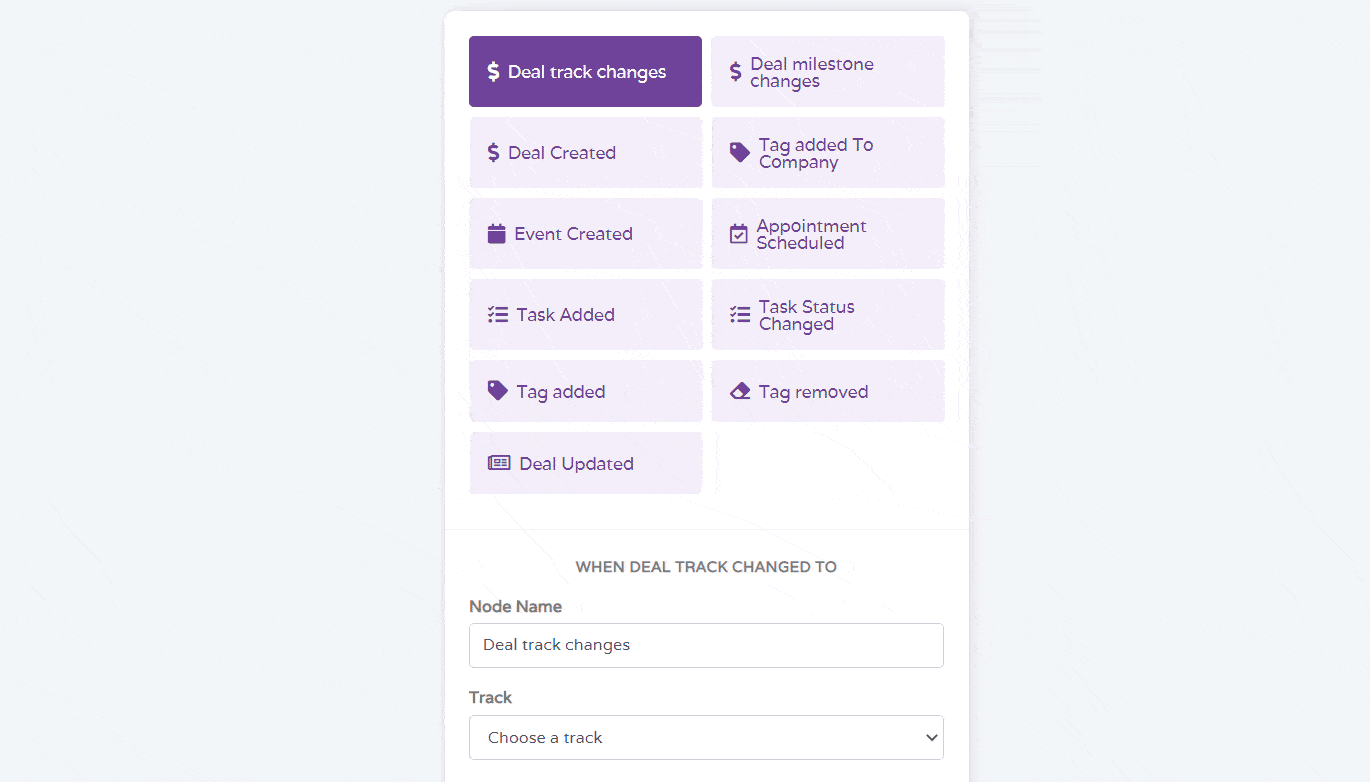
Here are some things to remove from your to-do list with sales automation:
- Lead management
- Record creation
- Meeting and appointment scheduling
- Invoice generation
- Communication (through email automation tools and more)
Read also: Sales Force Automation (SFA): An Easy Guide To Help You Get Started
13. Track Your KPIs
Monitoring your KPIs helps you understand what’s working (or not). Ideally, you should measure your performance against specific KPIs and make changes if necessary.
Below are four sales KPI categories that every SMB should track.
- Customer acquisition KPIs: It includes monthly new leads, website conversion rate, lead conversion ratio, lead-to-opportunity ratio, and customer acquisition cost.
- Customer retention KPIs: track your customer churn rate and customer lifetime value (CLV)
- Product profitability KPIs: Examples are revenue per sales rep, average sales cycle length, and service or product usage.
- Team productivity KPIs: This includes incremental sales by the campaign, cross-sell and upsell ratio, sales target, and profit margin per sales rep.
👉Master the art of sales lead management with our comprehensive guide. Learn how to effectively track, nurture, and convert your leads.
Conclusion
Increasing your sales is one of the best ways to skyrocket your revenue and ensure your business survives. The best part is that you don’t have to be a seasoned salesperson to convince customers to make a purchase. Start small by learning what makes a great salesperson, practice it, and enjoy the process.
Analyzing your sales data, laying the groundwork for a sales strategy, and managing the leads you already have are also excellent play. Once you’ve gotten the hang of your sales processes, you can explore other sales techniques and tools we’ve discussed in this guide.
And if you need a sales tool to practice what you learn or do deep salesperson activity, you can count on EngageBay. EngageBay is an all-in-one CRM solution that helps you market better, sell faster, and support your customers smarter.
